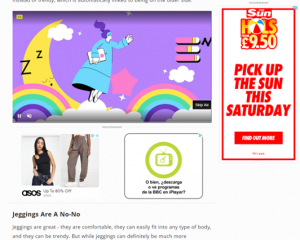What do robots know about quality journalism? Why we still need human input in digital media buying
by Francesca Coia, Digital Planning Account Director
According to every trends presentation, 2023 is the year of AI. Across multiple industries, algorithms are driving efficiencies and excitement and the ad industry is no exception. In just the last week, we have seen Ryan Reynolds read an ad script written by ChatGPT, whilst Martini have used the Midjourney tool to create new promotional imagery. But it’s not just brands who are benefitting. For digital media buyers, advances in ad tech make it easier to buy quality, effective media in an increasingly fragmented digital world:
-
Ad verification specialists like Integral Ad Science ensure you appear against brand safe content whilst avoiding ad fraud
-
Playground XYZ and Lumen mean we can begin to buy media based on attention metrics
-
Improvements in contextual targeting from providers like Grapeshot and Peer39 mean that you can buy based on page semantics – even more pertinent when cookies eventually deprecate
All these advances lead to the uneasy feeling that the “robots are taking over” – but what happens when you leave the robots to do the job for you?
Without human input, the ad tech is free to run your programmatic campaign, optimising towards highly viewable and highly attentive ads, finding opportunities to buy effective media at the right cost for the advertiser. However, many publisher networks are becoming savvy to these advances, and there is an increasing number of websites looking to cash in on all the advertisers desire for quality, safe advertising viewed by real humans.
Heard of opossumsauce.com or wackojaco.com? These seemingly innocuous sites are part of a network owned by Kueez – a “full cycle technology platform that enables growth and helps publishers optimise the entire publishing journey.” They run over 80 websites with 150 million readers per month, yet you’ve probably never heard of them.
There’s one simple reason for this – their traffic is driven by clickbait ads, like the below. I found this ad under an article on the Daily Mail – we’re all familiar with seeing them and for the most part consider them to be on the bottom rung of the digital advertising ladder.
If I click through on this terrible (not to mention, sexist) sponsored ad and land on wackojaco.com, I’ll find myself reading the most benign article with a cluttered and unpleasant ad experience:
The “editorial” content takes up about 10% of the page, whilst four advertisers vie for my attention. Ad verification partners wouldn’t find any issue with this, as the ads are viewable, take up a large share of the screen, and are being viewed by a human. Providers like Playground XYZ and Lumen may weed some of these ad placements out due to low-attention quality, but if they appear where a user may typically look (e.g., within the article content), then they may be optimized toward.
What is required in these situations, with support from the ad tech, is human management. These sites exist solely to drive revenue, rather than to provide quality journalism that is ad-funded. Without scrutiny you may well find that you deliver most of your campaign on these made-for-advertising sites that provide a poor user experience for the reader and low-quality ad impressions for the advertiser. The only winners are the publisher networks. Research from Jounce Media estimates that the ‘Made for Advertising’ industry collects 12.3% of all programmatic web display revenue and 24.3% of all programmatic web video revenue. It’s worth checking out brands4news if you’re interested in building your own inclusion list – they’re a Collective that help ensure quality news sites continue to be funded.



